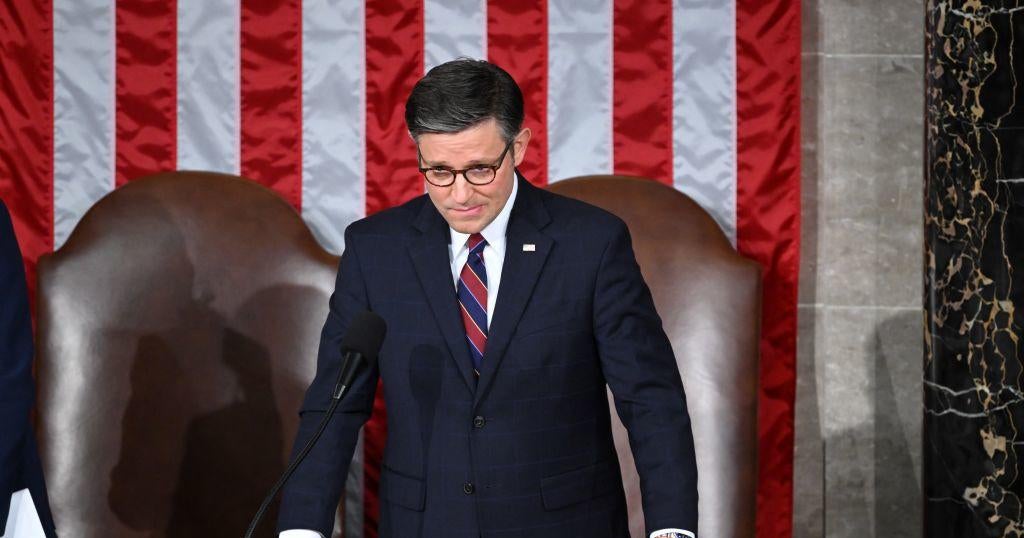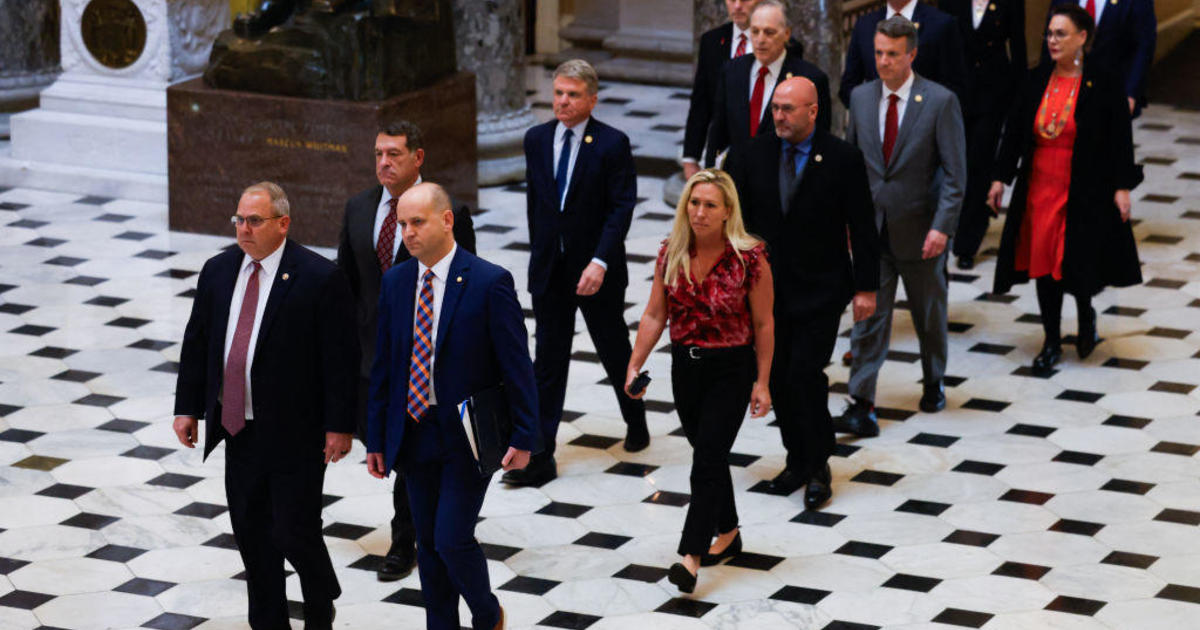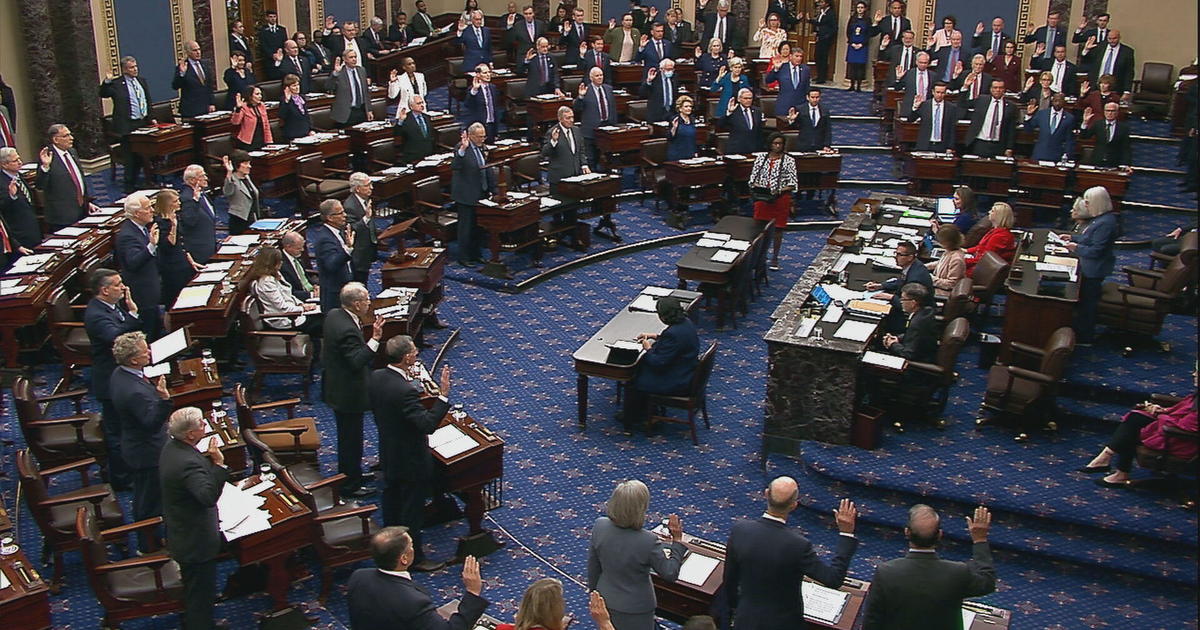What's going on with the debt ceiling?
The U.S. was careening toward its first-ever default in the absence of a deal to raise or suspend the nation's debt limit, allowing the Treasury to borrow more money to pay its debts. But it appears what most agree would be a crisis is on the verge of being averted in the short term.
Treasury Secretary Janet Yellen has warned the "extraordinary" measures currently being used to pay the government's bills are expected to be exhausted if Congress does not act by October 18, and at that point, the U.S. would run out of resources and default. It would be "catastrophic," Yellen said Tuesday, and would lead to a recession.
Democrats and Republicans in Congress were gridlocked for weeks over how to proceed. In the Senate, where 60 votes are usually required to pass a bill, Democrats and Republicans had settled on the understanding that only Democrats would vote to raise the debt limit, but since Democrats only have 50 votes, the two parties couldn't agree on how it would be done. Republicans filibustered — or blocked — Democrats' prior attempts before Thursday.
What's the state of play in Congress?
The problem, President Biden and Democrats say, is that GOP lawmakers are blocking the efforts they're making to enable a simple majority of 50 senators to pass a suspension of the debt limit. Republicans, Mr. Biden said Monday, need to "get out of the way."
Senate Republicans have so far refused to vote to raise or suspend the debt limit, and yet, they have already blocked several attempts by Senate Democrats to do so with a simple majority. The president prevailed on Republicans to stop obstructing Democrats' efforts to hold the vote under regular Senate rules.
One way to do this, which has now failed, is to get senators to agree unanimously to allow a simple majority to suspend the debt limit, rather than the 60 votes normally required to pass a bill. And the problem is that this approach means not a single Republican may object.
A breakthrough may be close, though. Senate Minority Leader Mitch McConnell on Wednesday offered a proposal suggesting Republicans would allow Democrats to pass a short-term provision to raise the debt ceiling to a specific figure until December.
Speaking on the Senate floor around midnight, Senate Majority Leader Chuck Schumer said the two sides "have been negotiating all afternoon and all night. ... We are making good progress. We're not there yet, but I hope we can come to an agreement tomorrow morning."
McConnell also maintained Democrats can raise the debt ceiling with the reconciliation process — without any Republican support.
So, what are Democrats going to do next?
Earlier, the White House called it "kicking the can down the road." Separately, Schumer is trying another avenue. Last week, the House passed a bill to suspend the debt limit, and Schumer planned to move forward with this legislation. Schumer reasoned that if 10 Republicans were to vote to allow the vote to proceed, Democrats wouldn't need any Republicans to support raising the debt ceiling in the final vote. The vote could take place Thursday or Friday.
Is that going to work?
Probably not. It is still expected to fail.
Isn't there some other way to get around the filibuster?
There is what's known as "the nuclear option," an extreme measure that enables the majority leader to change Senate rules. It was first used by Democratic Senate Majority Leader Harry Reid to kill the filibuster, the 60-vote threshold, for any nomination other than a Supreme Court justice. During the Trump administration, GOP Senate Majority Leader Mitch McConnell invoked it again to drop the filibuster for Supreme Court justices, too.
Here's how it works: the Senate majority leader raises a point of order that violates the current rules. The presiding officer rejects the point of order, and then the majority leader appeals the ruling and calls for a vote. A simple majority overturns the ruling of the chair, and the false statement made by the majority leader becomes the new rule.
So, in 2013, Reid declared that "the vote on cloture under Rule XXII for all nominations other than for the Supreme Court of the United States is by majority vote." The chair replied, "Under the rules, the point of order is not sustained."
Reid then asked for a vote on upholding the chair's ruling, and by a vote of 48-52, the chair's ruling was rejected. "The threshold for cloture nominations, not including those to the Supreme Court… is now a majority," the president pro tempore said.
On Tuesday, President Biden suggested he was open to another exception to the filibuster in order to raise the debt ceiling. "I think that's a real possibility," he told reporters. He has said he opposes eliminating the filibuster because it would "throw the entire Congress into chaos" and make it impossible to get anything done.
To do this, every single Senate Democrat would have to support the action. Senators Joe Manchin and Kyrsten Sinema, both moderates, have expressed opposition to ending the filibuster, and on Wednesday, Manchin rejected the idea, telling reporters, "I've been very, very clear where I stand on the filibuster — nothing changes." He implored McConnell and Schumer to work together and lead.
In June, Sinema wrote in a Washington Post opinion piece, "If we eliminate the Senate's 60-vote threshold, we will lose much more than we gain."
Can Democrats use reconciliation to address the debt limit?
Sure, but Democrats have rejected this idea, calling it "too risky." President Biden doesn't like the move. It's a lengthier, more complex way to hold the vote, but the White House said it has not been completely ruled out.
"The reconciliation process would mean essentially starting from scratch," White House press secretary Jen Psaki said Monday.
Bill Hoagland, of the Bipartisan Policy Center, explained that while using reconciliation to address the debt limit would involve revising the budget resolution, it would not jeopardize debate on the $3.5 trillion reconciliation package already underway. It can be considered in a separate bill.
"You could have three different reconciliation bills with all three different dates. They only combined the revenues and the spending into one reconciliation bill," Hoagland said. "All this does is set up a separate reconciliation for a separate bill that's only debt limit."
To use budget reconciliation, Democrats would only be able to raise the debt limit, not suspend it. The former requires them to come up with a specific dollar amount, while the latter does not demand a specific figure. Suspending the debt limit means that it would not be operative for a specific period of time until a certain date, and when that arrives, the debt limit would automatically rise to meet the funds spent during the period of suspension.
Hoagland estimates the full process of revising the budget resolution and moving forward with a debt limit reconciliation bill could take up to two weeks, but with the threat of default looming, he thinks it could go much more quickly.
"If you want to work around the clock a little bit, you could do this in a week," Hoagland said. Delay tactics could still be used, he noted, but questioned why Republicans would delay if they really want Democrats to use reconciliation to raise the debt limit.
Did Biden vote against raising the debt limit as a senator?
With the more than $28.4 trillion national debt resulting from past actions of both parties, Democrats have been pushing for a bipartisan approach to addressing the debt limit.
In a letter to Biden on Monday, McConnell said if the Democratic Party wishes to govern alone, "it must handle the debt limit alone as well." McConnell claimed the debt limit is often a partisan vote when the same party controls Congress and the White House.
"In 2003, 2004, and 2006, Mr. President, you joined Senate Democrats in opposing debt limit increases and made Republicans do it ourselves," his letter read. It stated Biden's view at that time that the party in power should take responsibility, as the GOP insists now.
In all three years McConnell referenced, Republicans voted with little or no support from Democrats to address the debt ceiling. In 2003, the debt ceiling was addressed with 50 GOP votes and 3 Democrats in the Senate; in 2004 it was 50 GOP votes and 2 Democrats; and in 2006, it was 52 GOP votes with no Democrats according to the Tax Policy Center.
Reporters asked the president Monday why his "no" votes in those years were different from the GOP stance now. Democrats weren't threatening to filibuster the vote, Mr. Biden responded. Democrats never demanded that Republicans find 60 votes to raise the debt limit — as they are now.
Hoagland, who was the staff director of the Senate Budget Committee for Republicans said that a straight up-or-down vote, the route Democrats would like to take, would be much faster and less complicated than using reconciliation to raise the debt limit.
Jack Turman and Brian Dakss contributed to this report.



